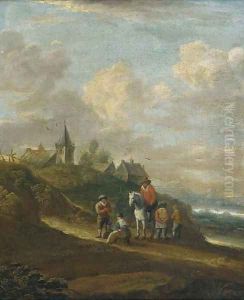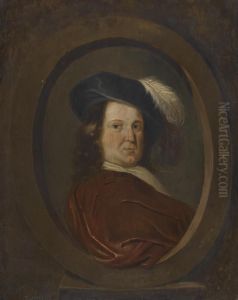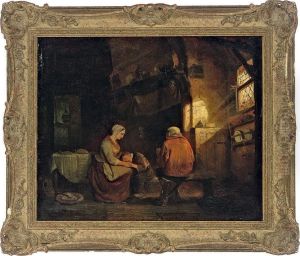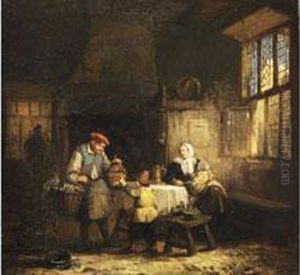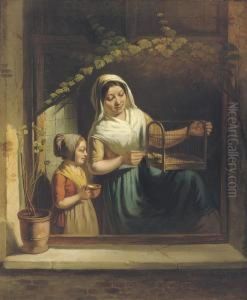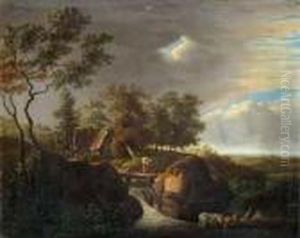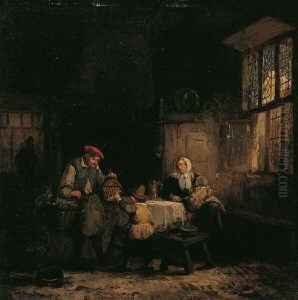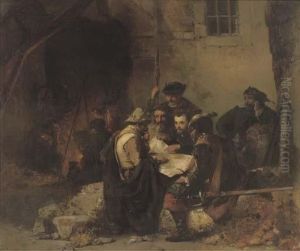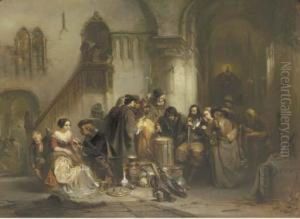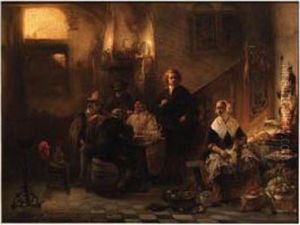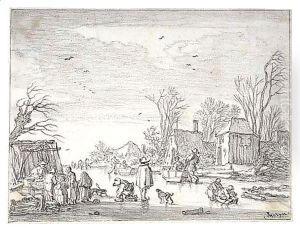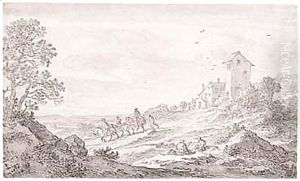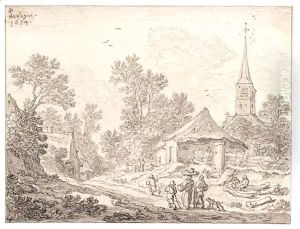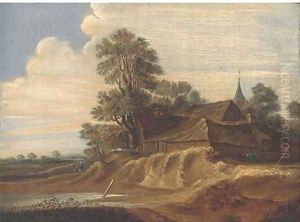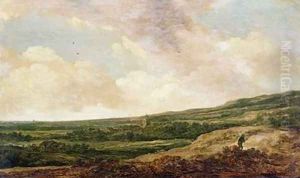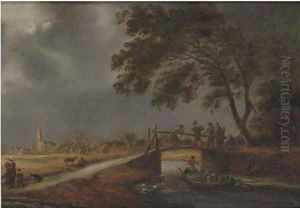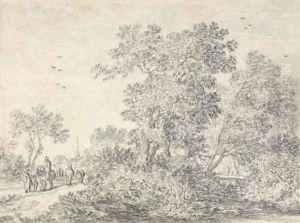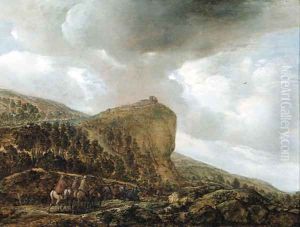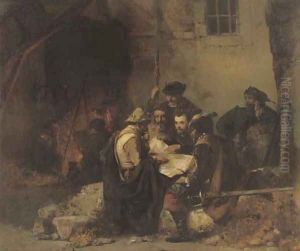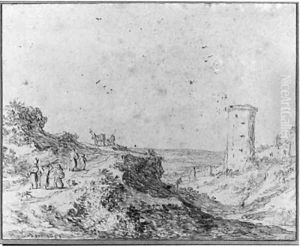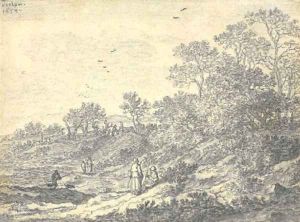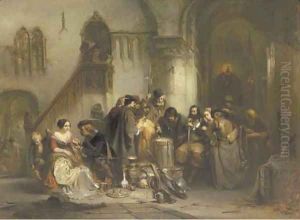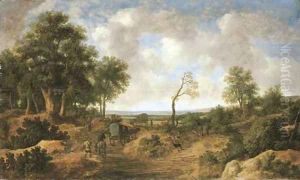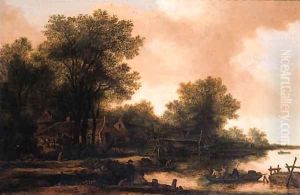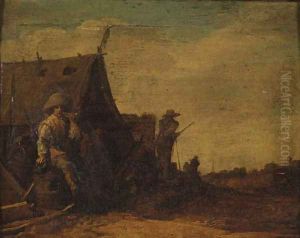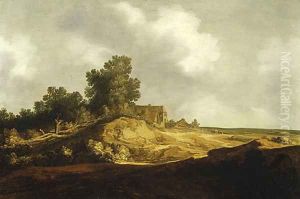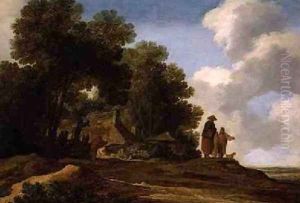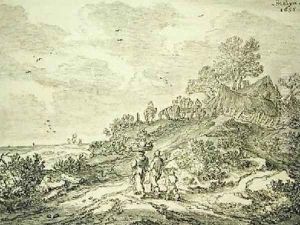Pieter Molijn Paintings
Pieter Molijn was a Dutch Golden Age painter and engraver born in London in 1595. Despite being born in England, he is considered a Dutch artist as his family moved to Haarlem when he was still a child, and it was there that he made his career. Molijn was a versatile artist, known for his landscapes, genre scenes, and architectural paintings, but he is particularly noted for his work in the tonal phase of Dutch landscape painting.
Molijn was a contemporary of other Dutch masters such as Frans Hals and Salomon van Ruysdael. He was an early follower of the Dutch realist and landscape painter Esaias van de Velde. Molijn's works often depicted the Dutch countryside, featuring dunes and flatlands, and he was adept at capturing the play of light and shadow across these terrains. His style was characterized by a harmonious and naturalistic approach, which was innovative for the time and contributed to the development of the Dutch landscape tradition.
In addition to his painting, Molijn was also a respected engraver and draftsman. He produced a number of etchings that illustrate his skill in rendering fine details and his ability to create depth and perspective in his compositions. His works in this medium also include depictions of everyday life as well as landscapes.
Molijn became a member of the Haarlem Guild of Saint Luke, an association of artists from Haarlem, in 1616 and later served as a dean of the guild. His influence extended through his teaching, and he had several pupils who would go on to become notable artists themselves. Pieter de Molijn's artworks are held in various museums and collections around the world, and he is remembered as one of the significant contributors to the Dutch landscape genre during the Golden Age of Dutch art. Pieter Molijn passed away in Haarlem in 1661.
